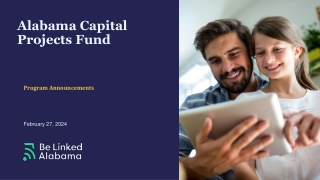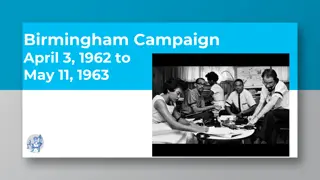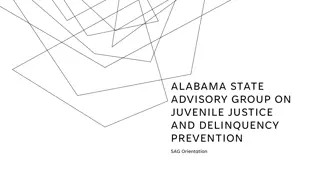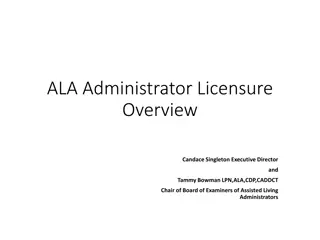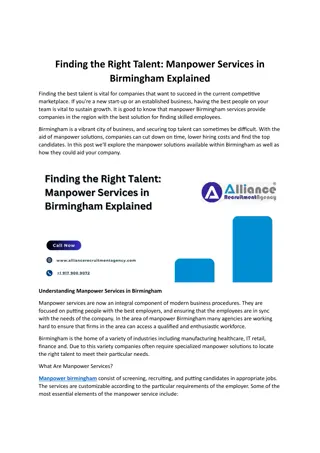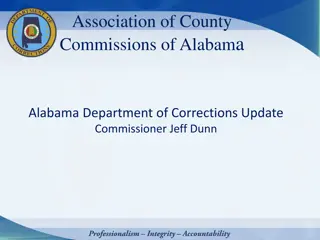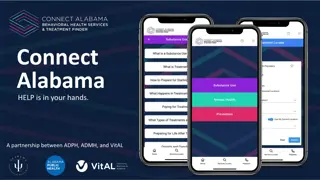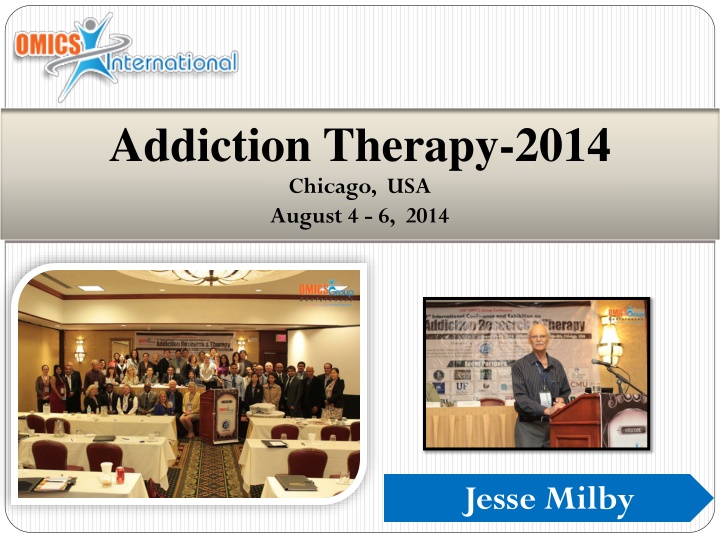
Developing a Comprehensive Theory of Behavior | International Conference 2014
Explore the journey towards a comprehensive theory of behavior discussed at the International Conference on Addiction Research and Treatment in 2014, proposing a paradigm shift in understanding human knowledge and behavior.
Download Presentation

Please find below an Image/Link to download the presentation.
The content on the website is provided AS IS for your information and personal use only. It may not be sold, licensed, or shared on other websites without obtaining consent from the author. If you encounter any issues during the download, it is possible that the publisher has removed the file from their server.
You are allowed to download the files provided on this website for personal or commercial use, subject to the condition that they are used lawfully. All files are the property of their respective owners.
The content on the website is provided AS IS for your information and personal use only. It may not be sold, licensed, or shared on other websites without obtaining consent from the author.
E N D
Presentation Transcript
Addiction Therapy-2014 Chicago, USA August 4 - 6, 2014 Jesse Milby
Toward Developing a Comprehensive Theory of Behavior Jesse B. Milby Ph.D. ABPP University of Alabama at Birmingham International Conference on Addiction Research and Treatment, Chicago, IL. USA Aug. 4-6, 2014
Acknowledgements At Johns Hopkins University 2004-2005 as visiting Professor of Psychiatry and Behavioral Neurobiology, some of the theoretical content was refined from dialogue about elements of the theory, with George Bigelo. Concepts were presented to UAB classes on Theories of Addiction,. Colleagues, especially Rudy Vuchinich, and Dennis Wallace, have provided valuable feedback and encouragement. Dennis Wallace has been particularly helpful with equation development and isomorphism with text language. Research support for studies and manuscript development provided by NIDA, Research Triangle International Inc. Raleigh, N.C. and University of Alabama at Birmingham.
Rationale for a Path to Develop a General Theory of Behavior Current status of broad theories of behavior Need to develop theory to help unify disparate areas of psychological knowledge Current attempts at unifying theory have flaws
Silos of Psychology Knowledge, Phenomena, Lawful Relationship and Micro- Theories - Etc. - Depression - Cog. Distortion - Prevention - PTSD th. & Trx - Group functions - Decision Making - Group by Pers. Stereo typing - Etc. - Pers. Traits - Pers. States - Theory of Personality - Etc. - Depression - Aggression - Cognitive distortion - Etc. - IQ - DSM DX - Memory - Neuropsy. Functions - Etc. Abnormal- Clinical Cog-Beh. Therapy Personality Assessment Social Silos of Psychology Knowledge (1) Personality Theory Social Psychology Psychology Assessment Cognitive Behavioral Therapy Abnormal / Clinical
The Path Proposes: Deduction of principles across domains of existing psychological knowledge and theory development. This process is elegantly argued for, and described succinctly by E.O. Wilson (1998). It is Consilience by synthesis, thus predictive synthesis.
Consilience Wilson s (1998) makes a compelling argument for a paradigm shift for conceptualization across all areas of human knowledge including behavioral science. Every area of human knowledge may be organized by a small number of natural laws that encompass principles applicable to all areas of human learning. This intellectual quest he calls consilience. It is in the spirit of consilience and concern for a path to unifying knowledge across psychology and behavioral science, that this path toward a unified general theory of behavior is offered.
First Flaws in Mowrers Theoretical System (1960) Does not specify when or how behavior is initiated Does not explain a mechanism for evolution of free- flowing behavioral output However, Mowrer s theory is accepted and assumed to be subsumed, in all its details of conditioning & learning, within the current proposed path. Proposed modifications may correct the flaws
Mowrers Theoretical System (1960a: 1960b) and proposed modifications Second Flaw: No effort to articulate with quantifiable theories 1. Formal Axioms and Postulates to address the flaws 2. First efforts to specify equations which may improve predictive precision of the modified general theory system
Flaws in Staats (1997) Theoretical System Does not define goal directed behavior as a key explanatory concept Provide insufficient mechanisms to assess and specify the key explanatory variable: Basic Behavioral Repertoire No effort to articulate with quantifiable theories
Flaws in Wests (2007) Theoretical System Specification lacking for how momentary motivation changes affect behavior No effort to quantify explanatory variables No effort to articulate with quantifiable theories
Flaws in Current Theories that New Path to Theory is Designed to Address No specification of starting and endpoint for explained behavior No accepted specification of the behavior to be explained, i.e. goal directed behavior No logically compelling (mathematical) articulation with other credible mini- theories, especially quantified theories that are well grounded in supportive programs of research
Path to Theory utilizes and builds on theoretical concepts of Mowrer and Staats (1996) Path to theory specifies new variables Path to theory attempts quantification Path to theory subsumes Maslow s Hierarchy of Human Needs as the structure of reinforcement that initiates and sustains human behavior
Path to Theory subsumes Maslow and Gagne s (Hierarchies) Maslow s hierarchy of human needs Gagne s hierarchy of human learning: classical cond. Instrumental cond. Discrimination learning Concept learning Principle learning Etc.
Maslows hierarchy of human needs Self Actualiza tion Affiliation/ Intimacy Family Groups Shelter Safety Food Air & Water
How Maslows Hierarchy is Subsumed Under New Theory Lower needs in the Maslow s hierarchy are most highly reinforcing and elicit behaviors to satisfy those needs until need is met As lower needs are met by targeted goal directed behavior, continued behavior becomes less reinforcing and higher needs more reinforcing, thus eliciting and reinforcing new behaviors higher in the hierarchy
How Gagnes Hierarchy is Subsumed Under New Theory Increasingly complex forms of learned behavior are presumed to be included in the explanatory concept of the developing Basic Behavioral Repertoire
Initial Explanatory Variables Obs. Beh. Output Space Time
Explanation Occurs at Nexus Obs. behav. output from repertoire domain of predicted behavioral output Time Space
Role of Momentary State of Well Being (SWB) at the Nexus SWB at nexus provides a positive or negative emotional state which compares to the emotional state of potential behaviors available for the nexus SWB at the nexus elicits a behavior from the Basic Behavior Repertoire which best matches the nexus for type (positive or negative) and intensity
Axioms for State of Well Being (SWB) Main Axiom Each human cell has a net factor positive or negative, designated Po or Ng, which can be represented by a number. This is consistent with, but expands, Mowrer s reinforcement system. At conception, the net sum of positive and negative factors from two contributing cells approximate zero sum. When a positive net sum dominates progressive mitotic division sums, the growing fetus thrives. When a negative net sum dominates progressive mitotic sums, the growing fetus becomes more vulnerable to premature death.
Axioms for SWB (contd) Postulate 1 Po is a positive state, defined as a neurobiological state, subsuming cognitive, emotional, and behavioral status, which is the perceived net well being of the developing fetus. Its strength is defined by the Po s positive sum at any moment and any context. The organism is attracted to all phenomena which increase its net positive sum, and repelled by phenomena which reduce its net positive sum. Postulate 2 Ng is a negative, aversive state, (a neurobiological state, subsuming cognitive, emotional, and behavioral status). It is defined as the Ng sum at any moment and any context. The organism is attracted to all phenomena which reduce its Ng sum, and repelled by all phenomena which increase its Ng sum.
Axioms for SWB (contd) Postulate 3 There is no Ng in pure Po. Postulate 4 Imperfect Po is dominated by stronger (higher sum) Ng, and imperfect Ng is dominated by stronger, imperfect Po. Postulate 5 Perfect Po sums, i.e. sums wherein there is no Ng sums, present to dominate, and displace Ng. Approximate net Po positive sums dominate Ng less.
Postulate 6- Prediction of a particular goal directed behavior, or evolving process of goal directed behavior in real time, can be achieved by accumulating and calculating the unique predicted probabilities of each goal directed behavior from the Basic Behavioral Repertoire at a specified nexus of space and time. The predicted behavior is the one with the highest probability. Postulate 7 predicts a most probable behavior at any nexus where there is knowledge of specific goal directed behaviors which are most likely to occur at certain space locations and temporal epochs with a predominant SWB Po or Ng state and intensity. If the highest probable behavior is not emitted, the theory predicts the next most probable behavior for that given nexus.
Corollary 7.1 For a given nexus of Time, Space, and current SWB type and intensity, the predicted probabilities are logically aligned hierarchically. Thus, if during a particular defined temporal epoch the theory predicts the highest goal directed behavioral from the BBR in the context of current nexus variables, and that predicted behavior is not emitted (observed or recorded), then the ncxt most probable behavior from the hierarchy is predicted. This process is continued until a current goal directed behavior is predicted and observed or a new behavior not in the current hierarchy of the BBR is recorded and assigned an initial Po or Ng value and calculated probability in the revised BBR.
Theory assumes goal directed behaviors from idiosyncratic BBR s for each individual can be specified using empirical methods, i.e. observation technology, self-report etc.
List of Common Behaviors with Their Probability for Thursday, 8-9 p.m. working at office p.01 eating dinner p.01 using telephone p.02 reading p.04 listening to music p.10 operating computer p.20 watching TV p.30 others not listed, p.32 total p.=1.0
Fig. X. The narrowing cone of predicted behavior from a compendium of goal directed behavior where specifying the space and time nexus, then the SWB type and intensity with relative match to SWB type and intensity maximizes behavior prediction. B B R Space X Time SWB Type/Intensity Match Predicted Behavior
How probability of predicted behavior across time can be increased by knowledge of Ng-Po dominance. Here where Ng is dominant, two predicted behaviors emerge twice during the time span 6 pm to 8 pm. Space (office) Time (8-9 pm) Predicted Beh. From BBR Ng Dominance Time (6-7 pm) Working at office Operating computer Operating computer
Theory Equation Variables and Definitions SWB= momentary state of well being where either Po or Ng is dominant Po= designates the net Po state at evolving time with an identified intensity Ng= designates the net Ng state at evolving time with an identified intensity Nexus= the temporal epoch at a specified space, and SWB type and intensity yields an equation with a predicted behavior probability
Fig. 4a. Added prediction stemming from inclusion of the momentary SWB at the time a goal directed behavior is emitted from the nexus. Predicted is a class of behaviors from the repertoire that either reduce, avoid, or escape Ng, or increase or maintain Po. Context Nexus Time Space Emitted Class of Behaviors (stimuli) SWB = Po Thurs. 8-9 pm 8 behaviors from BBR 5 behaviors maintain Po Basic Behaviors reduce Ng Repertoire (BBR) 1000 behaviors SWB - Ng 3 behaviors
Fig. 4b. Ultimate prediction of behavior from among class of behaviors of the Ng or Po class, depends upon the intensity of the SWB as Ng high or low, or as Po high or low. Illustrated is the Nexus for the same Time and Space as in Fig. 4a, where SWB = Po, but situations where Net Po is high and a situation where net Po is low. Emitted Behavior From Class Po High or Low Nexus___ SWB = Po Hi Po = hi 4 behaviors Po = low 5 behaviors from BBR SWB = Po Low 1
Fig. 5. Prediction of a specific behavior based on observed or measured probable behaviors at the nexus of a specified space, temporal epoch, and stimulus compound from the added variable SWB where either Ng or Po is dominant. Ng vs. Po Space A Epoch Dominance Home 25 behaviors 1 hr. Ng dominant 8-9 p.m. 12 behaviors Po dominant Space B Emitted Behavior 5 behaviors 7 behaviors Recreation Center 12 behaviors 1 hr. 6-7 pm. 6 behaviors Ng dominant 2 behaviors Po dominant 4 behaviors Space C Office 9 behaviors 1 hr. 8-9 p.m. 5 behaviors Ng dominant 2 behaviors Po dominant 3 behaviors
Predicting behavior when Space, Time, BBR components, & SWB are known
List of Common Behaviors with Their Probability for Thursday, 8-9 p.m. working at office p.01 eating dinner p.01 using telephone p.02 reading p.04 listening to music p.10 operating computer p.20 watching TV p.30 others not listed, p.32 total p.=1.0
Building Predictive Equations from Theory Variables & Derived Probabilities Space- hours in 24 behavior occurs in specified space. For home space= 14/24 hr.=.583 Time- specified hour(s) in 24 within which behavior is to be predicted. For specified epoch 8-9pm, =1/24 hr. = .042 Probability of Behavior 2 (eating dinner) from example BBR =.01
Prediction Assuming Probabilities are Additive 14/24 + 1/24 + Bh2 ( = .01) = .583 + .042 + .01 = .635 But prediction does not account for SWB type and intensity value of Bh2 from the BBR, nor the type or intensity match of SWB during the current nexus epoch
Predicting Behavior Using Knowledge of BBR behaviors & associated SWB type and intensity, & current epoch SWB type/intensity For a match of type SWB, the predictive equation utilizes an additive constant with value =1.0 subtracted from the subtrahend of the BBR intensity SWB value minus the current SWB intensity value. The operation is 1.0 (BBR, SWB intensity current SWB intensity) The equation then multiplies the summed probabilities by the subtrahend result of 1.0 the difference between BBR, SWB intensity and current SWB intensity.
Match vs. No Match Implications from Predictive Equation If BBR, SWB type & intensity & SWB type and intensity are the same (i.e. a perfect match) net subtraction is zero and summed probabilities are multiplied by 1.0 and maintain their highest predictive probability. Any subtraction yielding an imperfect match, say BBR SWB=.5 current SWB = .4, results in the multiplicand being reduced. In this case it is reduced from X 1.0 to X 0.9.
Final Predictive Equation S + T = BBR prob. X (1.0 [BBB SWB intensity value current SWB intensity value]) = Nexus BBR predicted behavioral probability
Table XYZ Table XYZ-2 Illustrates results of equation whereby nexus probabilities (probs) are calculated by multiplying probabs of Space, i.e. in the first row (8/24) =.33, X Time (8/24) =.33, and then adding the probability of behavior working at desk (p=.01) from the BBR. These operations are followed by the mathematical operations from a match comparison of the BBR SWB type and intensity match, with current nexus SWB type and intensity. The operation is 1.0 (Ng.2 Ng.2) = 1.0- 0=1, with the multiplier X 1.0, yielding a prediction probability = 0.1189.
BBR List Nexus Probabilities Nexus Probabiliti es Multiplied 1.0- (BBR, SWB type & Value- - Current SWB Match Value) = __ X Predicted Probabilities BBR List of Observed Behaviors in Specified Space SW B SWB Value Prob beh. S T BBR = Ng .2 .01 8/24=.33 X 8/24=.33 + .01 .1189 = 1-(Ng.2- Ng .2)=0 X 1= 0.1189 Office Work at desk Home Eating dinner Using telephone Watching TV Reading, home Listening to music Operating computer Others not listed
BBR List of Observed Behaviors in Specified Space BBR List Nexus Probabilities Nexus Probs Multipl ied 1.0- (BBR, SWB type & Value- - Current SWB Match Value) = __ X Predicted Probs SWB SWB Value Prob beh. S T BB R= Office Ng .2 .01 8/24=.33 X 8/24=. 33 + .01 .1189 x 1-(Ng.2- Ng .2)=0 X 1= 0.1189 Work at desk Home Po .1 .01 .33 14/24 =.1925 + .01 ..2025 x 1-(Po.1 - Ng .1)=0) X 1= 0.2025 Eating dinner X Using telephone Po .2 .02 .33 .1995+ .02 .2195 x 1-(Po.2 - Ng .2) = 0X 1= 0. 2195 X Reading, home Po .3 .04 .33 .1995+ .04 .2395 x 1-(Po .3 - Ng .2) =.9 X = 0.2155 X Listening to music Po .3 .10 .33 .1995+ .10 .2995 0 X 1.= x 1- (Po.3- Po.3) = 0.2995 X
BBR List Nexus Probabilities Nexus Probabilit ies Multiplie d 1.0- (BBR, SWB type & Value- - Current SWB Match Value) = __ X Predicted Probabilities BBR List of Observed Behaviors in Specified Space SWB SWB Value Prob beh. S T BBR = Operating computer Po .3 .20 .1995+ .20 .3995 x 1- (Po.3-Ng.2) =..9 X .9= 0.3595 .33 X Watching TV Po .3 .30 .1995+ .30 .4995 x 1- (Po.3- Po.3) = 0 X 1= 0.4995 .33 X Others not listed Po .4 .32 Total P=1.0 .1995+ .32 Tota l P=1. 0 prediction, assuming perfect match SWB type and intensity .5195 x 1- (Po .4 - Po .4) =0 X 1= .33 X 0.5195
Current Path to Theory Strengths Potential for organizing and explaining multiple domains of psychological knowledge & lawful phenomena using concepts & principles shared across knowledge domains. Quantitative logical structure clearly implies experiments derived to gather supporting or non-supporting evidence for the theory. From proposed & future equations, it may be possible, even when a proposed variable cannot be precisely defined, to predict behaviors for an individual at a specified nexus. Potential to be used for multiple applied purposes. May facilitate possibility it can be integrated with, if not subsume, other circumscribed theories in current disparate knowledge and theory domains. May be improved by collapsing the SWB type variable Po & Ng to a parsimonious variable which reflects making it better .
Current Path to Theory Problems (1) Problematic definition of goal directed behavior Existing measure of space, precision GPS, may not be precise enough to specify details of a true discriminative stimulus for emitted behavior. No existing measurement for specifying extant BBR No empirical data to support theory s implications and predictions No existing quantitative articulation with other empirically grounded quantitative theories
Current Path to Theory Problems (2) Equation language (common math notation) does not specify precisely what text is saying. Thus current text and equation language are not isomorphic. We are working on this! Because similar constructs (emotional state and intensity) are used for the equation and to record and codify behavior via artificial intelligence (AI) software for each individual s Basic Behavioral Repertoire, there is a risk of tautological reasoning and hypostatization (explaining by naming).
Meet the eminent gathering once again at Addiction Therapy-2015 Florida, USA August 3 - 5, 2015 Addiction Therapy 2015 Website: addictiontherapy.conferenceseries.com


